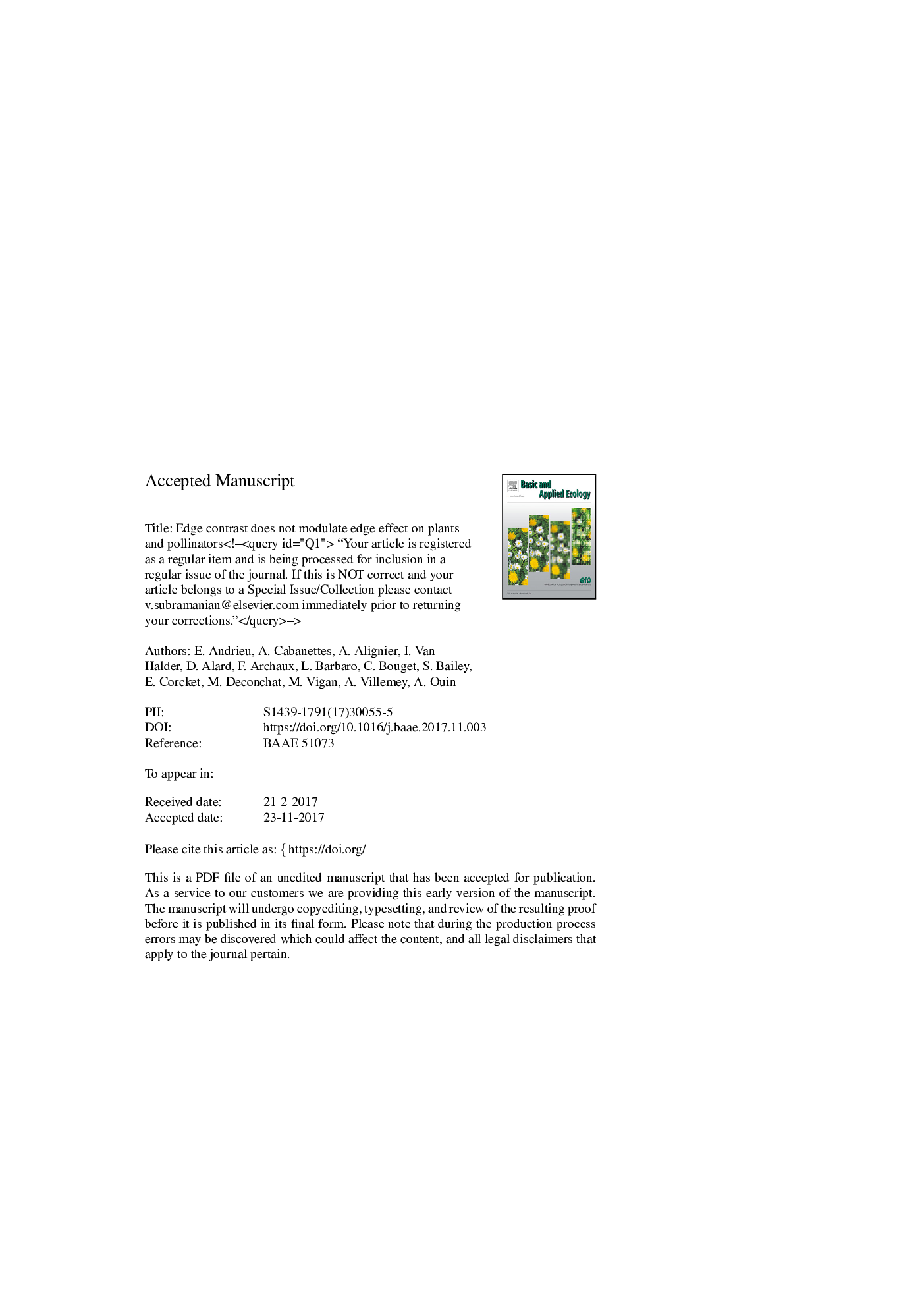| Article ID | Journal | Published Year | Pages | File Type |
|---|---|---|---|---|
| 8847031 | Basic and Applied Ecology | 2018 | 30 Pages |
Abstract
Edge contrast, is one of the main determinants of edge effects. This study examines the response of plant and pollinator diversity (bees and butterflies) to forest edge contrast, i.e. the difference between forests and adjacent open habitats with different disturbance regimes. We also investigated a potential cascading effect from plants to pollinators and whether edge structure and landscape composition mediate the relationship between edge contrast and beta diversity of pollinators. We sampled 51 low-contrast edges where forests were adjacent to habitats showing low levels of disturbance (i.e. grey dunes, mowed fire-breaks, orchards, grasslands) and 29 high-contrast edges where forests were adjacent to more intensively disturbed habitats (i.e. tilled firebreaks, oilseed rape) in three regions of France. We showed that plant diversities were higher in edges than in adjacent open habitat, whatever the edge contrast. However, plant beta diversity did not differ significantly between low and high-contrast edges. While we observed higher pollinator diversities in adjacent habitats than in low-contrast edges, there were no significant differences in pollinator beta diversity depending on edge contrast. We did not observe a cascading effect from plants to pollinators. Plant and bee beta diversities were mainly explained by local factors (edge structure and flower cover) while butterfly beta diversity was explained by surrounding landscape characteristics (proportion of land cover in grassland).
Related Topics
Life Sciences
Agricultural and Biological Sciences
Animal Science and Zoology
Authors
E. Andrieu, A. Cabanettes, A. Alignier, I. Van Halder, D. Alard, F. Archaux, L. Barbaro, C. Bouget, S. Bailey, E. Corcket, M. Deconchat, M. Vigan, A. Villemey, A. Ouin,
